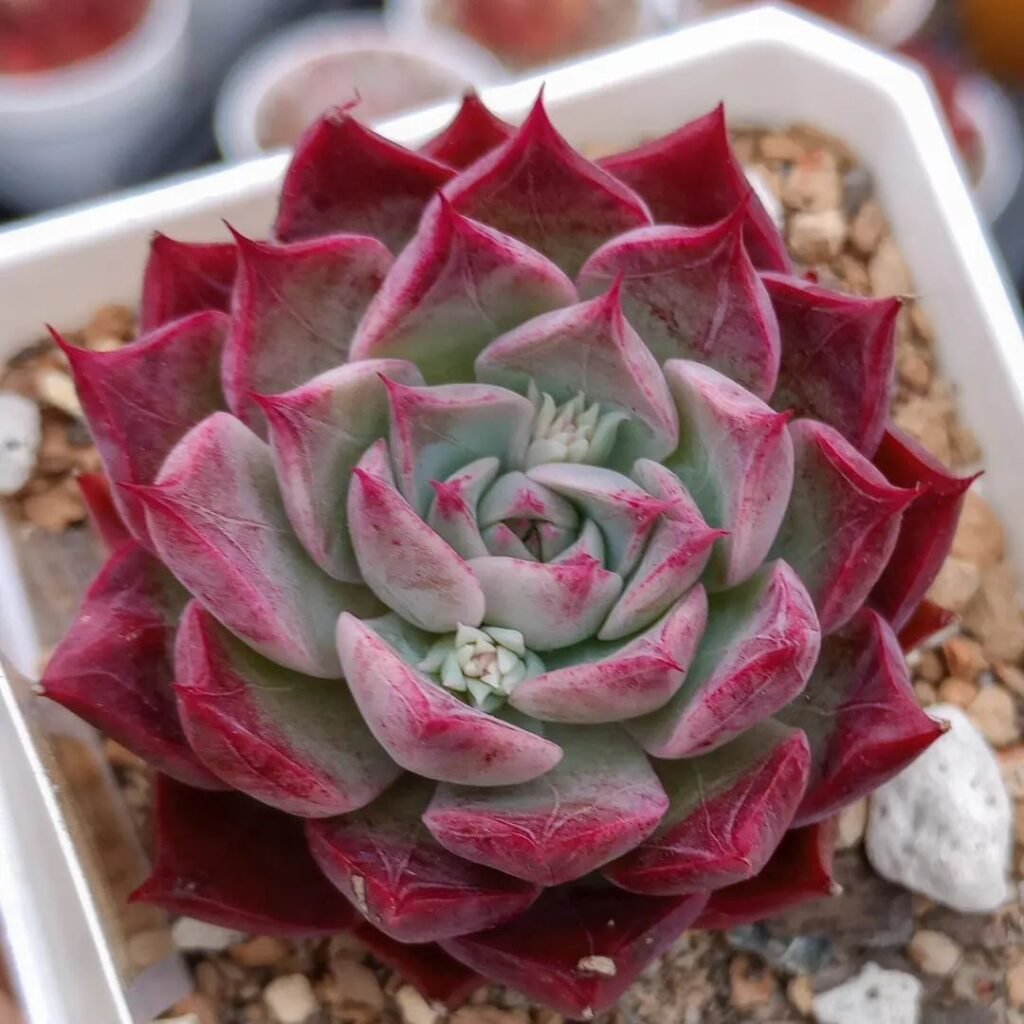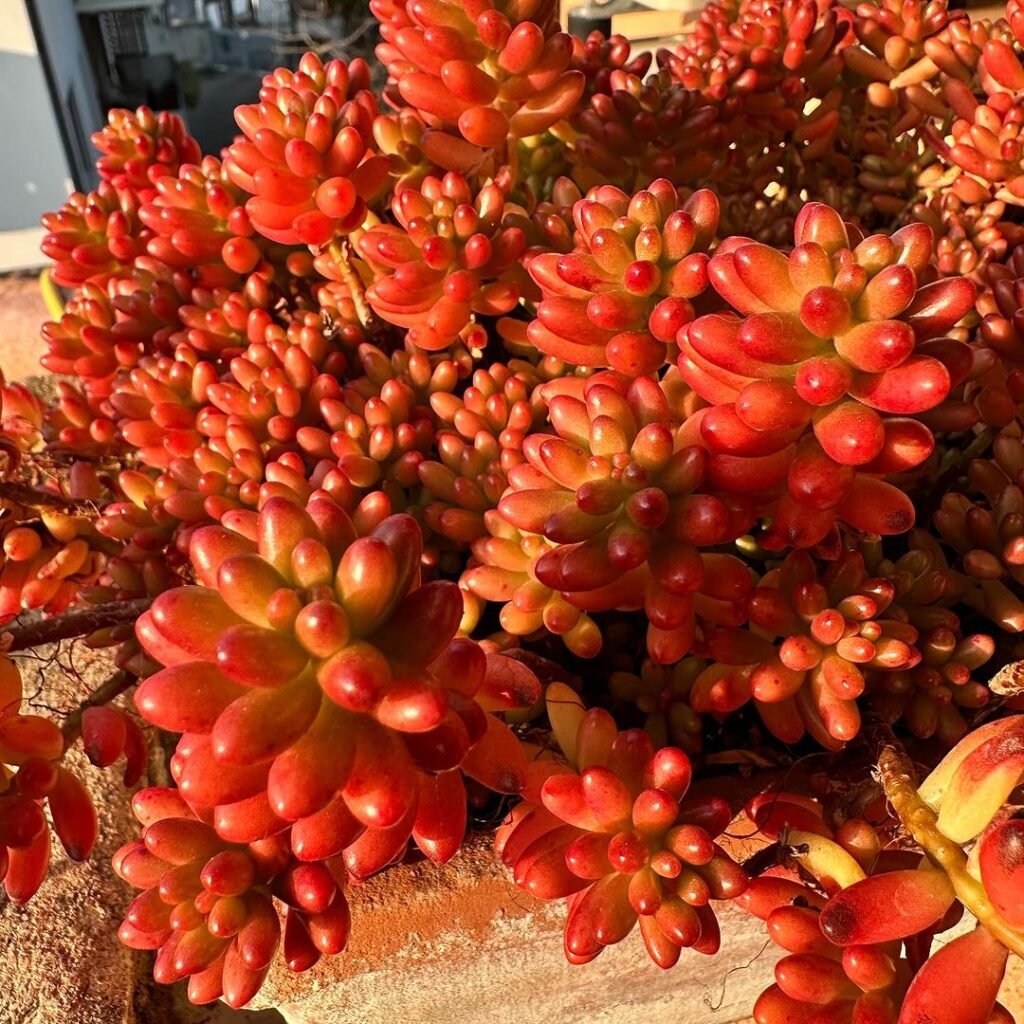Dive into the world of Korean succulents! Learn all about their unique types, easy care tips and how to add these charming plants to your home garden. Perfect for beginners and plant lovers in the USA.
Hey there, plant lovers! If you’re like me, you probably love succulents for their low-maintenance beauty. They’re great for adding a touch of green to any space without too much fuss. Recently, I’ve been really into Korean succulents they’re just so unique and pretty! Let’s dive into what makes these little guys so special.
What Are Korean Succulents?

Here’s a comprehensive and easy-to-read information chart for Korean succulents, which primarily includes species adapted to the Korean climate and commonly grown as succulents:
| Category | Details |
|---|---|
| Botanical Name | Sedum species (e.g., Sedum pachyphyllum, Sedum rubrotinctum) |
| Common Name | Korean Succulent, Jelly Bean Plant (specific to certain species) |
| Plant Type | Succulent |
| Hardiness Zone | Typically Zone 6-9 |
| Sun Exposure | Full sun to partial shade; prefers bright, indirect light |
| Soil Type | Well-draining soil, such as cactus or succulent mix; ideally sandy or gravelly |
| Watering | Allow soil to dry out between waterings; water thoroughly but infrequently |
| Growth Habit | Low-growing, rosette or spreading growth; can form dense mats |
| Height/Spread | Height: 3-6 inches (7.5-15 cm) / Spread: 6-12 inches (15-30 cm) |
| Special Features | Attractive fleshy leaves, often with unique colors or patterns; drought-tolerant; can be used as ground cover or in containers |
So, what exactly are Korean succulents? Basically, they’re types of succulents that either come from Korea or have been specially cultivated there. These plants often have really cool shapes, colors and patterns that make them stand out. They’re kind of like the supermodels of the succulent world.
Popular Types of Korean Succulents
Here are some of the coolest Korean succulents you might want to check out:
1 .Echeveria

Here’s an easy-to-read and verified information chart for Echeveria succulents:
| Category | Details |
|---|---|
| Botanical Name | Echeveria spp. |
| Common Name | Echeveria |
| Plant Type | Succulent |
| Hardiness Zone | Typically Zone 9-11 (some species can tolerate colder temperatures with protection) |
| Sun Exposure | Full sun to partial shade; prefers bright, indirect light; can tolerate some direct sunlight |
| Soil Type | Well-draining soil, such as cactus or succulent mix; preferably sandy or gritty |
| Watering | Allow soil to dry out completely between waterings; water thoroughly but infrequently |
| Growth Habit | Rosette-forming, with some varieties spreading or clustering; generally low-growing |
| Height/Spread | Height: 4-8 inches (10-20 cm) / Spread: 6-12 inches (15-30 cm) |
| Special Features | Attractive rosette shapes with colorful or frosted leaves; can have edges that change color; drought-tolerant |
These are known for their pretty rosette shapes and bright colors. They’re super easy to care for, which makes them perfect for beginners. Check out more about Echeveria on Wikipedia.
2. Haworthia

Here’s an easy-to-read and verified information chart for Haworthia succulents:
| Category | Details |
|---|---|
| Botanical Name | Haworthia spp. |
| Common Name | Haworthia |
| Plant Type | Succulent |
| Hardiness Zone | Typically Zone 9-11 (some species can tolerate colder temperatures with protection) |
| Sun Exposure | Bright, indirect light; can tolerate some direct sunlight but generally prefers shade |
| Soil Type | Well-draining soil, such as cactus or succulent mix; ideally sandy or gritty |
| Watering | Allow soil to dry out completely between waterings; water thoroughly but infrequently |
| Growth Habit | Rosette-forming, typically compact and low-growing; some species form clusters |
| Height/Spread | Height: 2-6 inches (5-15 cm) / Spread: 4-8 inches (10-20 cm) |
| Special Features | Attractive, often translucent or patterned leaves; small size makes them suitable for containers; drought-tolerant |
These little guys are also rosette-shaped but have thicker, fleshier leaves. They’re great for indoor spaces. Learn more about Haworthia here.
3. Sedum

Here’s an easy-to-read and verified information chart for Sedum succulents:
| Category | Details |
|---|---|
| Botanical Name | Sedum spp. |
| Common Name | Sedum, Stonecrop |
| Plant Type | Succulent |
| Hardiness Zone | Typically Zone 3-9 (varies by species) |
| Sun Exposure | Full sun to partial shade; prefers bright, direct sunlight but can tolerate some shade |
| Soil Type | Well-draining soil, such as cactus or succulent mix; often sandy or gravelly |
| Watering | Allow soil to dry out completely between waterings; water thoroughly but infrequently |
| Growth Habit | Varied; includes low-growing ground covers, upright clumping, and trailing types |
| Height/Spread | Height: 2-12 inches (5-30 cm) / Spread: 6-24 inches (15-60 cm) depending on species |
| Special Features | Diverse leaf shapes and colors; many species have vibrant flowers; drought-tolerant; attracts pollinators |
Sedums are known for their trailing growth and bright green leaves. They look awesome in hanging baskets or rock gardens. Here’s more info on Sedum.
4. Aeonium

Here’s an easy-to-read and verified information chart for Aeonium succulents:
| Category | Details |
|---|---|
| Botanical Name | Aeonium spp. |
| Common Name | Aeonium |
| Plant Type | Succulent |
| Hardiness Zone | Typically Zone 9-11 (some species can tolerate colder temperatures with protection) |
| Sun Exposure | Full sun to partial shade; prefers bright, indirect light but can tolerate some direct sunlight |
| Soil Type | Well-draining soil, such as cactus or succulent mix; preferably sandy or gritty |
| Watering | Allow soil to dry out between waterings; water thoroughly but infrequently. Reduce watering in winter |
| Growth Habit | Rosette-forming, with some varieties being upright and others trailing or spreading |
| Height/Spread | Height: 6-18 inches (15-45 cm) / Spread: 6-24 inches (15-60 cm) depending on species |
| Special Features | Attractive rosette shapes, often with vibrant colors; some varieties have striking leaf patterns; drought-tolerant |
These have waxy leaves that form rosettes and can grow quite tall. They’re great if you want to add some height to your plant collection. Find out more about Aeonium.
How to Care for Korean Succulents
Light Requirements
Korean succulents love bright, indirect light. Too much direct sunlight can burn their leaves and too little light can make them look leggy and sad. A south or east-facing window is usually perfect.
Watering Tips
The trick with succulents is not to overwater them. Let the soil dry out completely between waterings. Overwatering is the number one killer of these plants because it leads to root rot. When you do water, give them a good soak, then wait until the soil is bone dry before watering again. Check out the USDA’s guide on watering succulents for more tips.
Soil and Potting
Succulents need soil that drains really well. You can buy cactus or succulent soil or make your own by mixing regular potting soil with sand or perlite. Just make sure your pot has drainage holes. More detailed info can be found on the University of California Agriculture and Natural Resources site.
Temperature and Humidity
These plants prefer temperatures between 60-80°F (15-27°C). They can handle a bit of cold, but it’s best to keep them above freezing. They also like low humidity. For more on the best conditions, visit the National Gardening Association.
Common Problems and Solutions
Overwatering
- Symptom: Mushy, discolored leaves.
- Solution: Cut back on watering and make sure the soil dries out completely.
Underwatering
- Symptom: Wrinkled, shriveled leaves.
- Solution: Water more frequently, but still let the soil dry out between waterings.
Pests
- Common pests: Mealybugs, spider mites and aphids.
- Solution: Use insecticidal soap or neem oil to get rid of pests. If one plant is infested, move it away from your other plants until you’ve handled the problem.
Benefits of Growing Korean Succulents
Low Maintenance
These plants are super easy to care for, making them perfect if you’re busy or just starting out with gardening.
Decorative Appeal
Korean succulents have unique shapes and colors that can really add some flair to your home or office.
Health Benefits
Believe it or not, succulents can actually improve the air quality in your home. They remove toxins and add oxygen to the air. Plus, just having plants around can help reduce stress and boost your mood.
Where to Buy Korean Succulents
You can find these beauties at local nurseries, garden centers or online. Just make sure you’re buying from a reputable source to get healthy plants. Here are some places to check out:
Korean succulents are a fantastic addition to any plant collection. They’re unique, beautiful and easy to care for, making them perfect for both beginners and seasoned gardeners. Follow the tips in this guide and you’ll be well on your way to enjoying these stunning plants in your home or garden.
Pingback: Boost Your Hanging Succulents: The Ultimate Fertilizing Guide
Pingback: The Venerable Green Lotus: A Valuable Addition to Every Water Garden
Pingback: Whale Fin Snake Plant Care Guide - Gardener's School
Pingback: Calandiva : Your Complete Guide to Growing and Caring for This Charming Flowering Plant (2024)